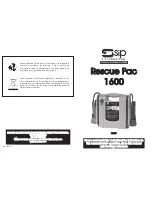
Assembly
Cleaning
Referring to Figure 1:
1. Remove
two
hex cap screws
and
flat wash-
ers
(A) that secure the
fence assembly
(B) to
the table and discard.
2. Set
the
fence assembly
(B) aside to permit
cleaning of the table.
3. Peel away the
plastic protective wrap
(C)
covering the table surface.
Exposed (unpainted) metal surfaces, such as the
table top and extension wings, have been given a
protective coating at the factory.
4. Remove protective coating with a soft cloth
moistened with kerosene.
Do not use acetone, gasoline, or lacquer
thinner for this purpose. Do not use solvents
on plastic parts, and do not use an abrasive
pad because it may scratch the surfaces.
Lock Handle Assembly
1. Locate two
fence locks
from the hardware
package (Page 9, Item M) and disassemble.
Referring to Figure 1:
2. Place
the
large washers
(E) on the shaft of
each
lock handle
(D), then insert into the
slotted openings
(O) on the
fence casting
(P).
3. Continue the lock handle re-assembly by
plac-ing one
small flat washer
(F
1
), followed
by the
spring
(G) and second
small flat
washer
(F
2
) on each shaft protruding from the
bottom of the
casting
(P). Place
lock nuts
(H)
on the threaded ends and tighten all the way
(19mm deep socket required).
When the
lock nuts
(H) are secured, 1/2" of
thread should be visible on the ends of the
lock handle shaft
(D).
Fence Assembly Installation
1. Place the
fence assembly
(N) on the
table
(Q).
2. Line up the threaded ends of the
lock handles
(D) with the
threaded mounting holes
(R) on
the
table
(Q) and secure, but allow sufficient
slack to permit the fence to be adjusted
backward and forward.
3. Place
the
safety guard holder
(L) on the
cast-
ing
(P) and secure with
lock knobs
(J) and f
lat
washers
(K).
Figure 1
Electrical Connections
9
Summary of Contents for JWS-35X Series
Page 36: ...Table Assembly Drawing 36...
Page 38: ...Fence Assembly Drawing 38...
Page 42: ...Cabinet and Base Assembly Drawing 42...
Page 48: ...Notes 48...










































